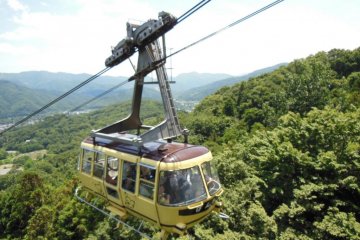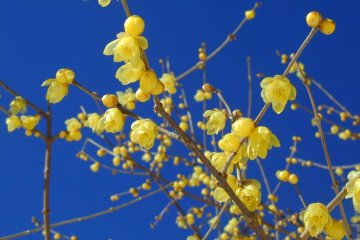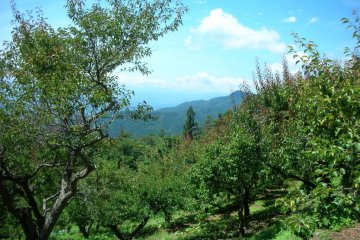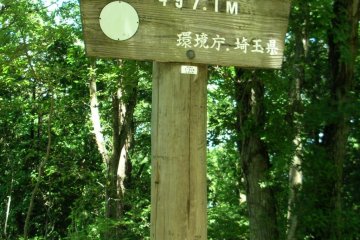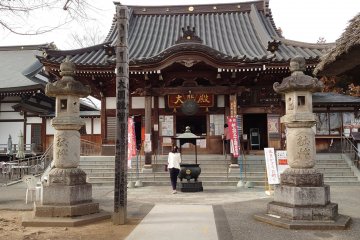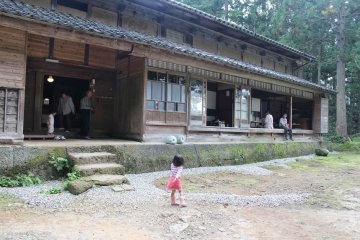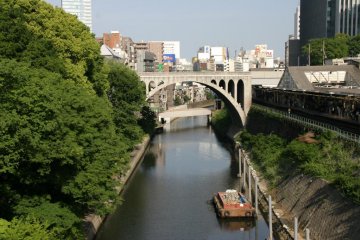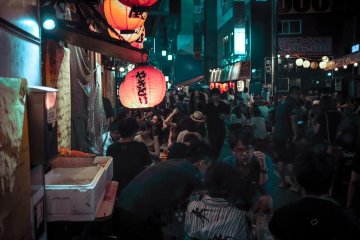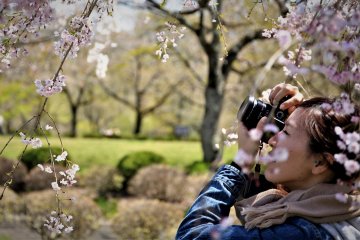Nagatoro, to many is all about the river flowing through its center – the Arakawa. And, whilst the Arakawa is a truly gorgeous body of water in these parts, it is far from all the town has to offer in terms of nature to see, feel, breathe in and enjoy.
800 meters to the west of the station up a gentle slope at first, followed by a slightly more strenuous 5 minute trek is the bottom station of the Hodosan (Mt. Hodo) Ropeway.
Mt. Hodo, whilst not the highest peak in western Saitama, does offer some of the most spectacular views back to the east, across town, over the Arakawa and over to the peaks far off into the distance.
For those looking to do it the hard way, it is possible to hike to the top and it should take no more than an hour at a leisurely pace.
Those looking to make the trip to the 497.1 peak in more comfort, and building up less of a sweat would be advised to use the ropeway.
For just 800 yen per adult for a round trip ticket, the 5-minute ride to the upper station will remove much of the total 355 meter ascent (Nagatoro Station itself being at an altitude of 142 meters) , leaving you to enjoy the more gentle and winding slopes up from the ropeway station to the wooded peak.
There are a number of routes to the top but the walk through the thousand plum trees planted not far from the disembarkation point is a pleasant indicator of what is to come. Many are separately labelled indicating species and offer shade from the sun in the warmer months and protection from the wind come autumn and winter.
Once through the plum trees, if visiting Mt. Hodo in winter, the introduced local flower known in English as wintersweet (pictured) will be everywhere. Bright yellow, when seen against the clear skies that Saitama is known for during much of the winter, the flower is originally from China but has acclimatized and even thrives in Nagatoro.
Only a short walk past the area made so colourful by the wintersweet is the peak. One side offers a view over the valley in which the towns of Nagatoro and Kaminagatoro sit peacefully so far below. The other side, wooded, at first offers hikers the opportunity to continue over the ‘Nagatoro Alps’ to eventually end up at Nogami Station slightly further to the north.
For those looking to come back down the hill by way of the same ropeway, take the path down through the upper-branch of Hodosan Jinja, a shrine with its main buildings back down the slope near the cable car station. (see separate article)
The branch of Hodosan Jinja near the peak, when visited at any time of year offers up a somewhat mysterious air due to the height of the surrounding trees and their shadow-casting foliage.
By walking through the shrine gate, down the steep flight of stone steps, and turning to the right, you will eventually arrive back at the ropeway station.
Before you jump onto the next 61 man capacity car heading down though, take a walk around the back of the station, to the right, and ring the peace bell whilst enjoying the view through the concrete frame in which it is mounted – over the river and town far below.



